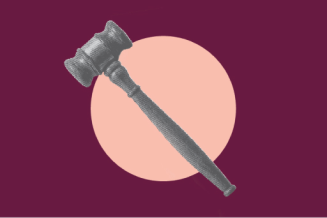The Real Border Crisis


On Jan. 8, Donald Trump gave the first Oval Office address of his presidency in which he warned of a “growing humanitarian and security crisis at our Southern border.” Since then, he’s threatened to declare a national emergency, described the border as a “major” and “massive” crisis, and even called the situation “an invasion.” For 34 days — the longest-running shut down in history — the president refused to reopen the federal government unless Congress gave him $5.7 billion to build more border walls, record funding to jail an unprecedented 52,000 immigrants per day, and a wishlist of unconscionable legal changes specifically targeting the most vulnerable immigrants, including children seeking asylum.
I recently traveled to Tijuana, Mexico, with Lee Gelernt, lead attorney in the ACLU’s challenge to the Trump administration’s asylum ban, which tried to disqualify people from seeking asylum if they enter the United States at any place other than an official port of entry. The ACLU first successfully blocked the ban on Nov. 9, 2018. We were there to meet with Al Otro Lado, a California-based organization that provides legal services to migrants and refugees in Tijuana and is a plaintiff in our lawsuit.
Customs and Border Protection is one of the world's largest law enforcement organizations, but it claims it doesn't have “capacity” to process more than a handful of asylum seekers at a time. For context, CBP processes around 100,000 travelers at the San Ysidro Port of Entry each day, but it has only been accepting between 20-80 asylum seekers per day. As a result, there are around 5,100 people stuck in dangerous conditions in Tijuana who want to seek asylum or other protections in the U.S. but are facing an expected waiting time of up to 12 weeks or longer.
Our visit made one thing clear: The humanitarian crisis at the border is one created by President Trump’s own policies which target asylum seekers, and it won’t be solved by a wall.
What’s more, the president seems intent on making the situation worse. On Thursday, it was reported that the administration plans to turn back asylum-seekers from the border, forcing them to wait in Mexico while their asylum cases are decided in the U.S.
Here are three very real problems we observed at the border, all made worse by the Trump administration’s anti-asylum policies.
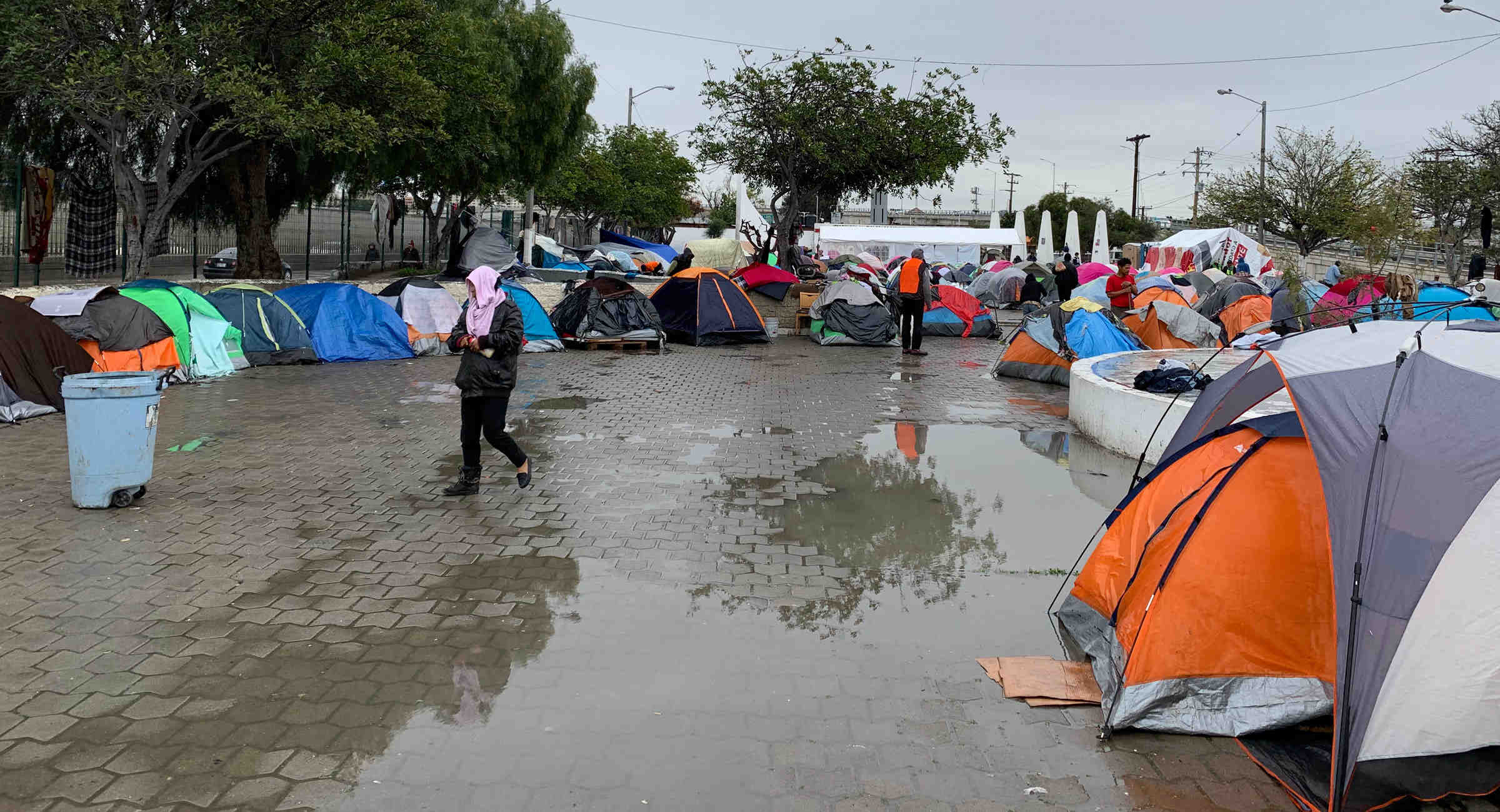
Tijuana’s shelters, the majority of which are run by churches and small nongovernmental groups, are strained for capacity. People are considered lucky to be able to secure a spot in a shelter and many migrants are living in tent encampments on the street throughout the city. This is one such encampment.
Dangerous Conditions in Tijuana
Our trip began at the San Ysidro port of entry at the California-Mexico border. We met Erika Pinheiro, the litigation and policy director for Al Otro Lado, on the Mexican side and went to a shelter run by a nonprofit organization called the Border Angels.
The shelter was small and dimly lit with rain leaking through the ceiling. The walls were closely lined with gray slab bunkbeds, and there was a hotplate in the corner by the window for cooking food. There were around 30 people staying there, although Erika said she’d seen as many as 80 on previous occasions. We also visited a “family shelter,” housed in a garage-like space with a concrete floor and corrugated metal roof. Around 50 small camping-style tents filled the space, where families slept.
Most of the shelters in Tijuana are run by churches and nongovernmental organizations, although there are around 2,000 migrants staying in a large government-run refugee camp called El Barretal, which is inside of an abandoned night club, about a 30-minute drive — or more than three hours on foot — from the San Ysidro border crossing. Thousands of migrants were previously staying at a large sports complex called Benito Juarez, which was much closer to San Ysidro.
The Mexican government says that Benito Juarez was closed because of heavy rains flooding the field, but many believe that they were moved to El Barretal, which is in a dangerous neighborhood, to make it harder for migrants to reach the border crossing.
Unsanitary conditions plague all the shelters. Nicole Ramos, border rights project director at Al Otro Lado, reported “squalid conditions” at Benito Juarez, with “many migrants, including pregnant women and children, sleeping in the dirt with only plastic sheeting to protect them from the elements.”
Many people crowded out of the shelters are forced to stay in tent encampments out on the street. At one such encampment, one man called out to me, gesturing to a small tent on the sidewalk and said, “Esta es mi casa,” — “This is my house.”
In addition to dealing with inadequate shelter, asylum seekers have also become targets for organized crime. In December, two Honduran teenagers were killed after leaving a youth shelter to travel to Benito Juarez.
Before that, 20 migrants were kidnapped outside Benito Juarez and transported to Sonora, Mexico, where they were forced to clean blood and biological waste from a warehouse, as reported by Al Otro Lado. After several days, they escaped through a window and attempted to return to Tijuana. Many of them, however, were recaptured, and the kidnappers began extorting money from their families for their release.
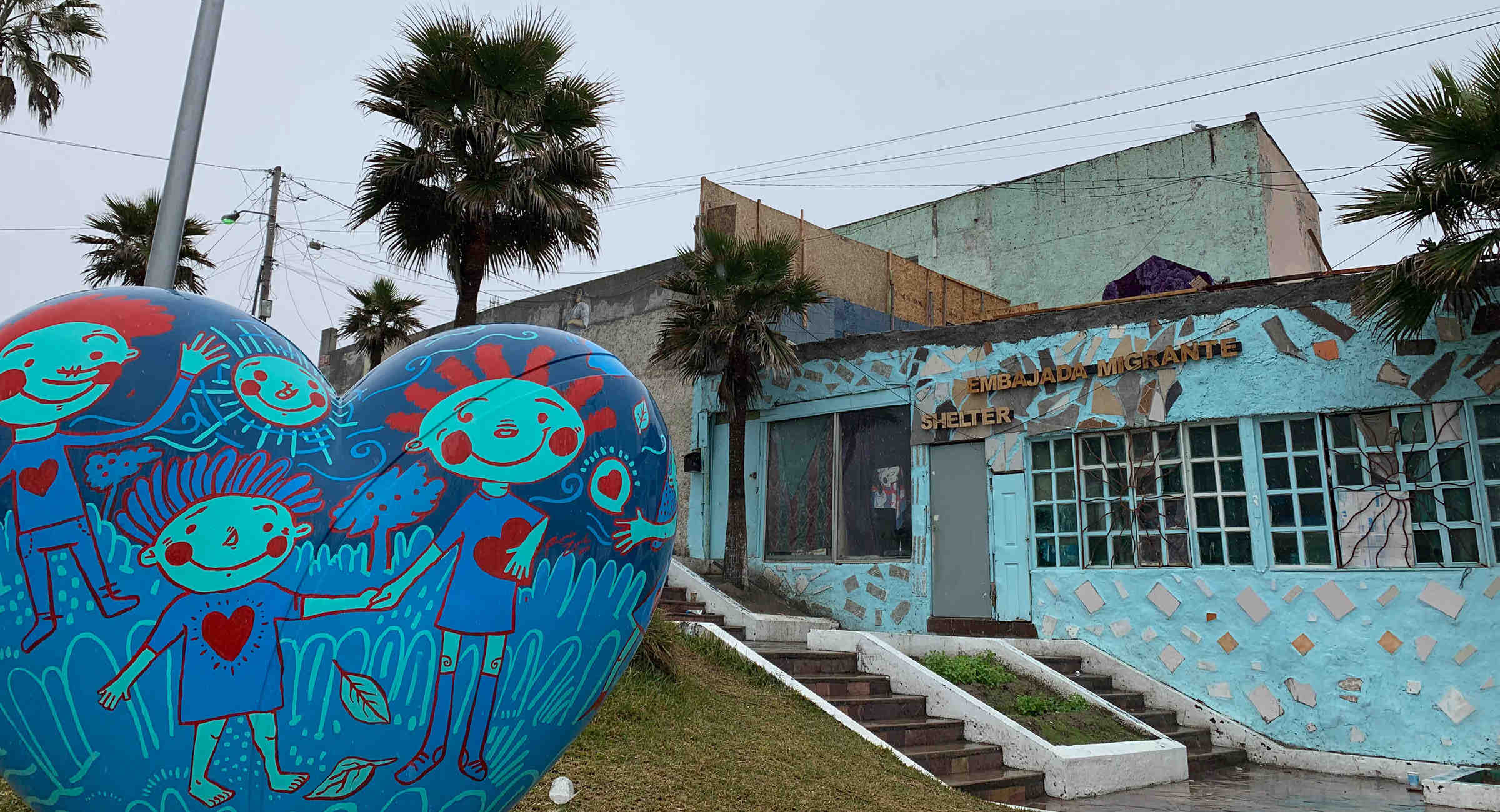
The Border Angels shelter sits at the edge of Friendship Park, a U.S. national monument and the only federally designated bi-national meeting place along the southern border. Since its establishment in 1971, people would gather at Friendship Park to speak to family or friends on the other side of the border. In 1994, a metal fence was constructed which splits the park between San Diego and Tijuana and extends into the Pacific Ocean. In February 2018, Border Patrol began limiting visits to 30 minutes and restricting the number of people who are allowed to be in the park.
Metering and Illegal Turnbacks
The waiting times for asylum processing have increased, but not because border crossings are at an all-time high, as Trump has claimed.
Customs and Border Protection has been illegally turning asylum seekers away at ports of entry — an administration practice that is the subject of a lawsuit by Al Otro Lado and partners. Under both American and international law, people have the legal right to seek asylum and other forms of protection at the U.S. border. When someone expresses a desire to apply for asylum or a fear of returning to their country of origin, CBP is required to provide that person with an opportunity to seek protection, as mandated by the Immigration and Nationality Act. CBP officers are not authorized to evaluate the individual’s asylum claims themselves or to turn people away. That responsibility belongs to asylum officers with U.S. Citizenship and Immigration Services and, in some cases, immigration judges.
The ACLU’s Border Rights Center has documented instances of CBP stationing agents mid-bridge between the U.S. and Mexico at the border crossing over the Rio Grande in Texas and preventing people trying to seek asylum from approaching.
The administration has also been limiting the number of asylum seekers who are allowed to enter the U.S. each day — a tactic called “metering.” In the past, people were able to present themselves at a port of entry and begin the asylum process without delay. However, the Trump administration’s metering practice has created a huge backlog where thousands of people are now being forced to wait for months at the border, unable to access a port of entry to make an asylum claim.
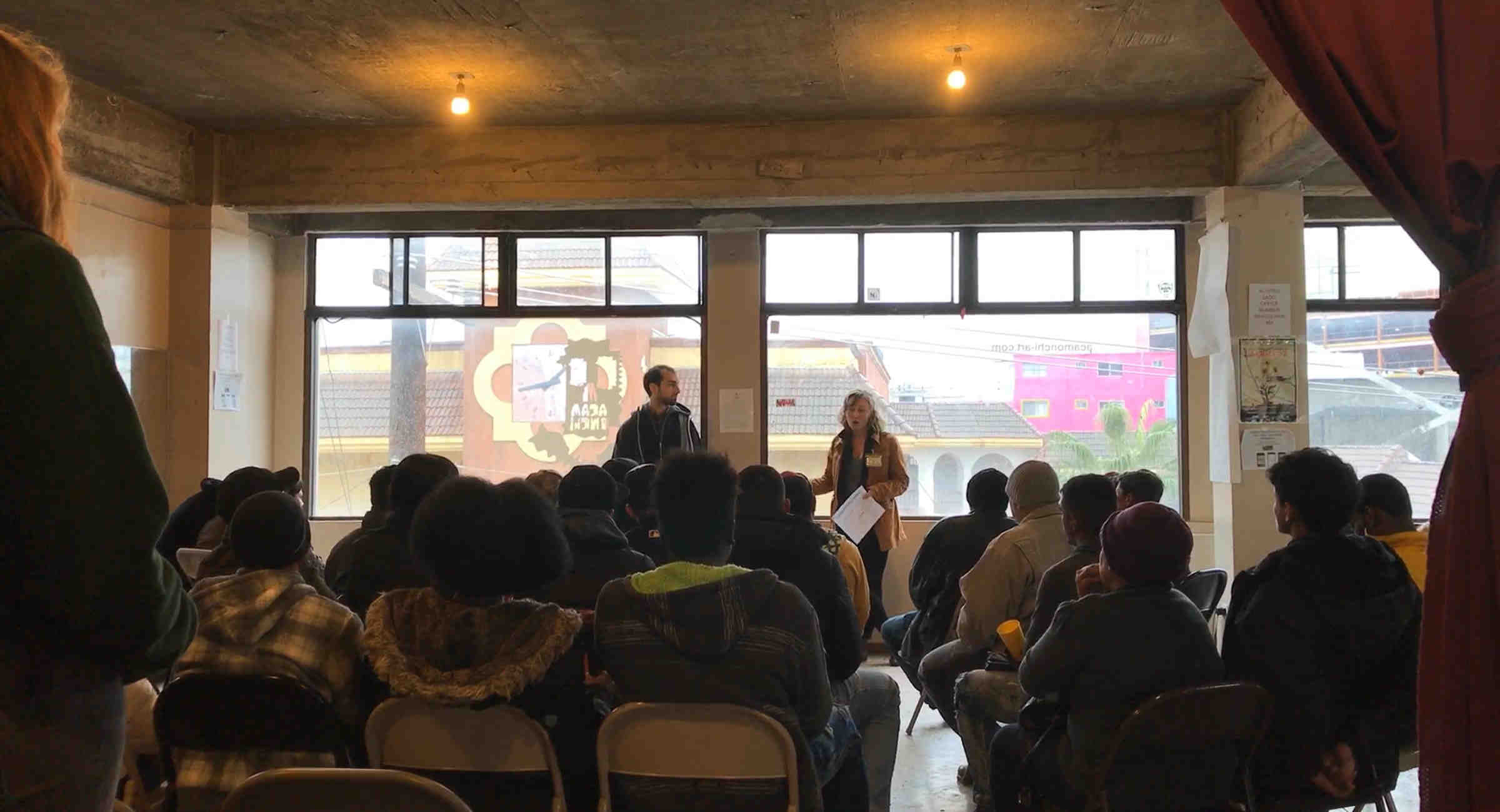
People listen to a know-your-rights training at Al Otro Lado’s daily legal clinic in its Tijuana office. Al Otro Lado runs a program for legal, medical, social service, mental health volunteers to work with refugees on both sides of the border.
“La Lista”
In place of proper and orderly access to the U.S. port of entry, a different system has arisen on the Mexican side of the border in Tijuana: “la lista,” or the list, which is managed in part by a self-organized committee of asylum seekers. Each night, Mexican immigration officers lock the notebook in a safe and then return it to the list managers the next morning. Handwritten in a notebook, this list keeps track of who is next in line to apply for asylum in the United States.
Every morning, people gather in El Chaparral plaza, which sits at the base of the pedestrian bridge between Tijuana and the San Ysidro Port of Entry in California, to listen for their names. At some point in the day, U.S. border officials tell Grupos Beta, an arm of Mexican immigration services, how many people they will process that day. The Mexican agency then relays that information to the list managers.
Among other things, the list itself is not without bias. Erika and Nicole have seen instances in which the list managers refused to include asylum seekers who were transgender, gay, or Black.
The list also explicitly leaves out a very vulnerable population: unaccompanied minor children, who are being not allowed to put their names on the list at all. Grupos Beta has told list managers that they cannot include children who do not have a parent or guardian present. Al Otro Lado, who regularly represents unaccompanied minors, has seen Mexican agents take unaccompanied children into custody when they try to get a number on the list or approach the port of entry directly.
“Esta es mi casa,” — “This is my house.”
Al Otro Lado has documented over 100 unaccompanied children stuck in Tijuana who wish to apply for asylum in the United States. Several of the children are LGBT and have faced severe persecution. Others have been forced to engage in child labor or have had families targeted for violence, also putting their lives at risk.
The final stop of our visit was to a youth shelter for children who made the journey to the border alone. The walls are painted bright orange. Inside around 50 youths, almost all boys and just a few girls, ranging from the ages of 12 to 17, were gathered in the common space to meet with us. The majority of children had traveled from Honduras, but there were also some from Guatemala, El Salvador, and Mexico.
Erika and another lawyer introduced themselves, letting the group know that later in the week attorneys would be visiting the shelter to consult with them individually on their cases.
The majority of the kids wanted to seek asylum, but when Erika asked how many had a number on the list, only one hand went up.
In an address on Jan. 19, President Trump decried the “humanitarian and security crisis,” with children being exploited by drug cartels and migrants in need of medical care. None of these problems can be fixed by a wall.
If he truly wants to find solutions, he needs to end his policies that target asylum seekers.
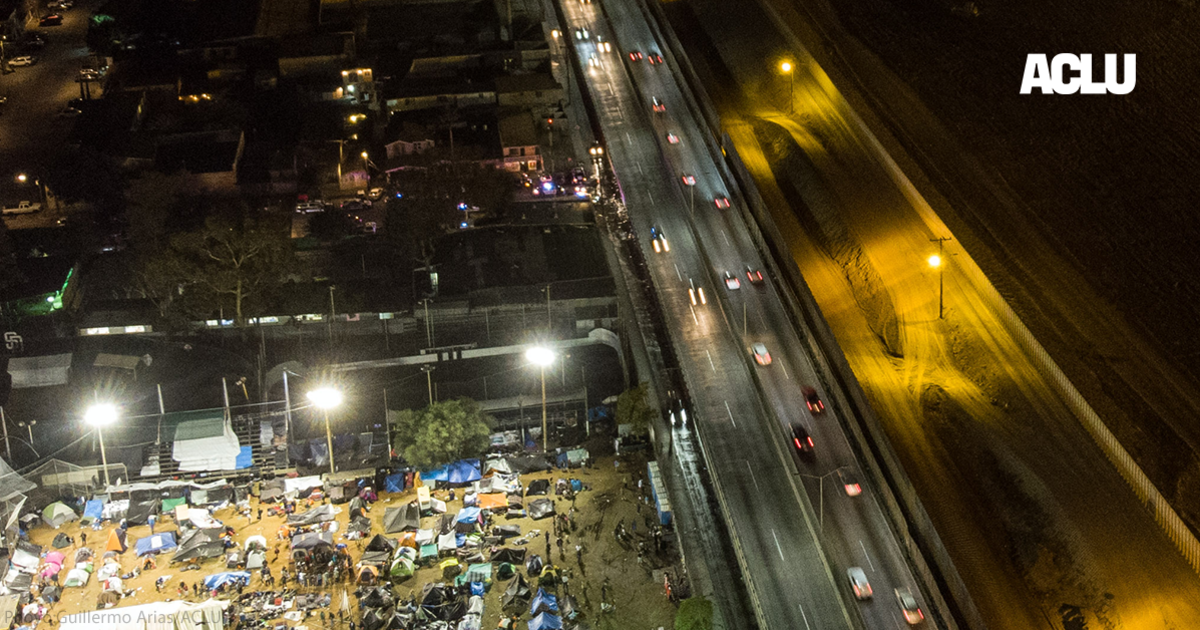
Trump's New Policy is Stranding Asylum Seekers in Mexico
The administration sent hundreds of asylum seekers to Mexico with no regard for the danger they face there.
Source: American Civil Liberties Union
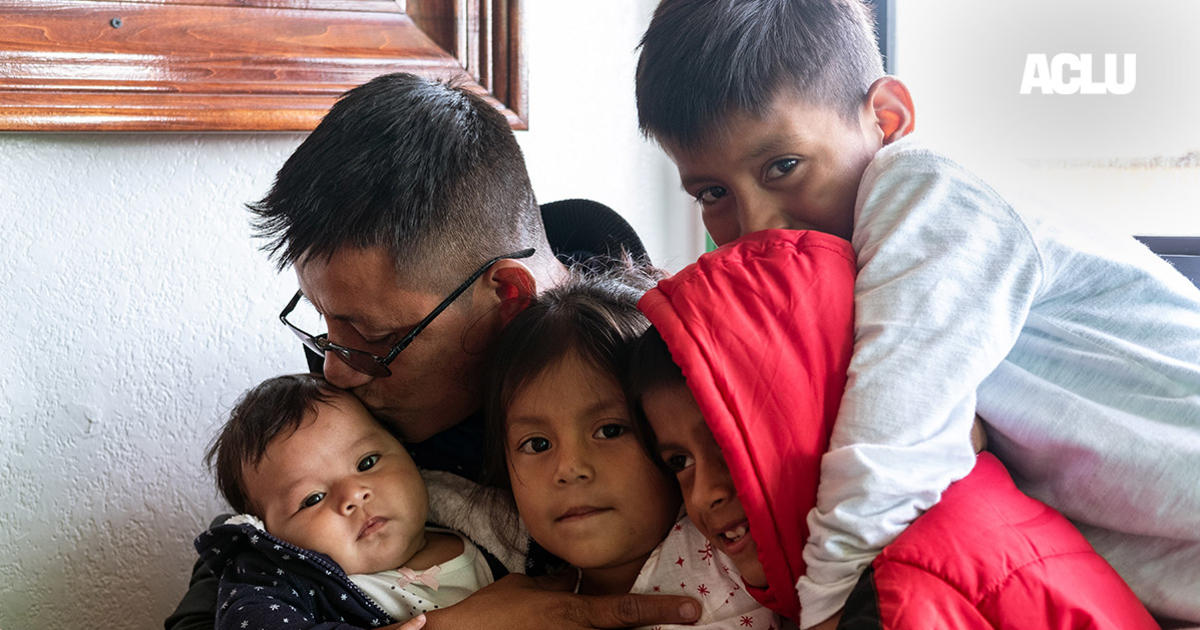
Separated From Their Children by U.S. Immigration, Jubilation as These Parents Win Entry in Mexicali
Meet some of the 29 separated parents who crossed into U.S. territory to make asylum claims at a border checkpoint on Saturday.
Source: American Civil Liberties Union
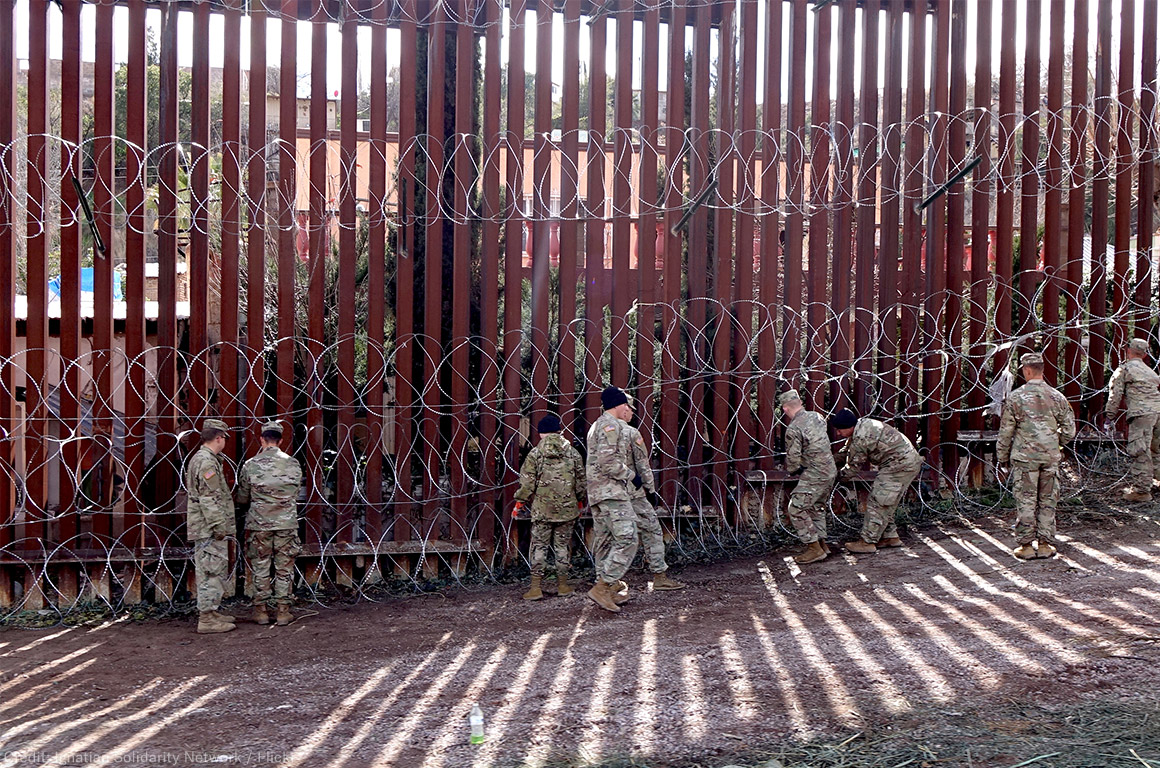
Trump’s ‘Emergency’ Declaration Is Illegal
President Donald Trump declared a “national emergency” on Friday to pay for his border wall.
Source: American Civil Liberties Union
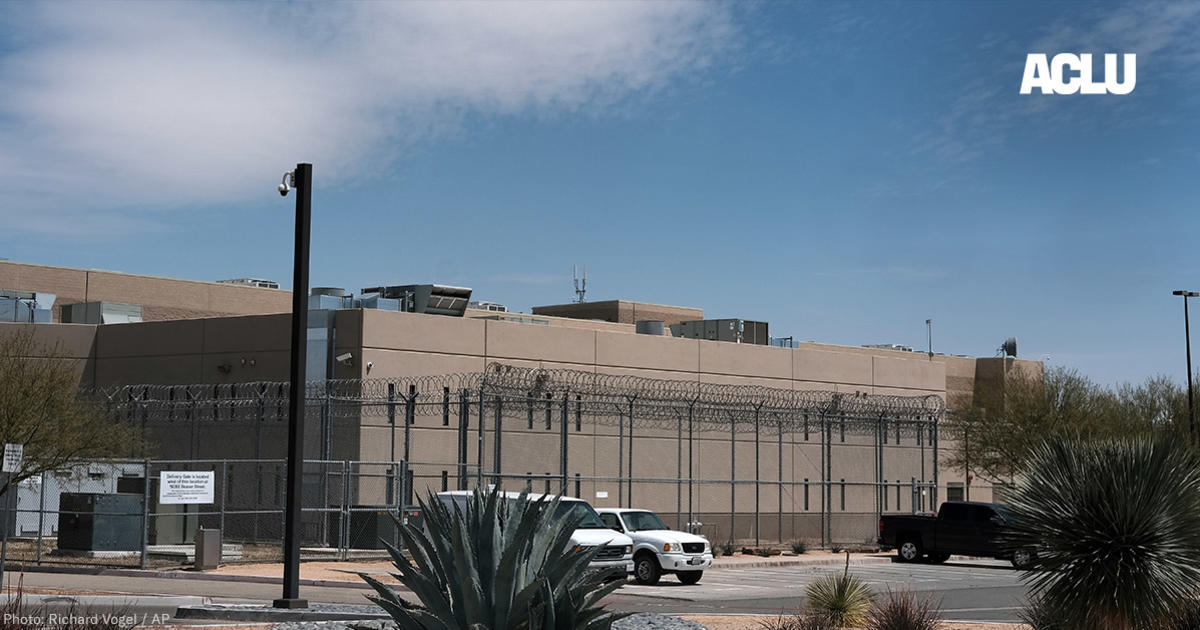
Discretionary Detention
Cesar Matias, a gay man, fled persecution in Honduras on account of his sexuality and arrived in the United States in 2005.
Source: American Civil Liberties Union
Donate to the ACLU
The ACLU has been at the center of nearly every major civil liberties battle in the U.S. for more than 100 years. This vital work depends on the support of ACLU members in all 50 states and beyond.
We need you with us to keep fighting — donate today.
Contributions to the ACLU are not tax deductible.


